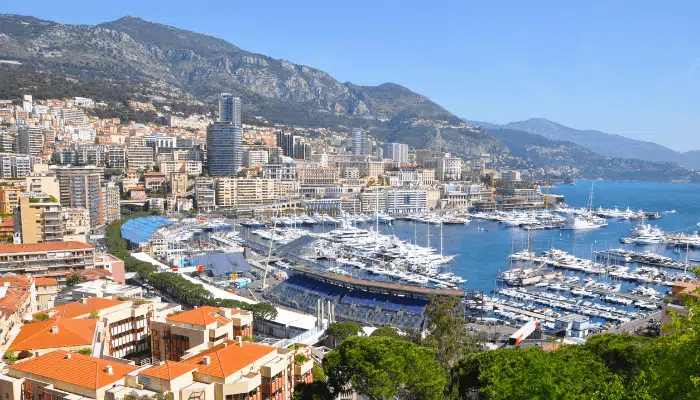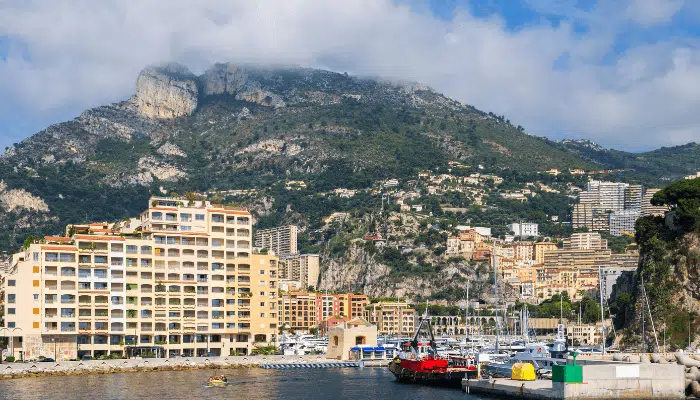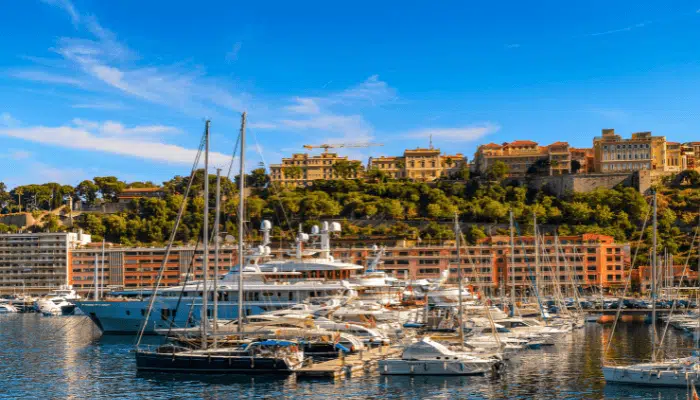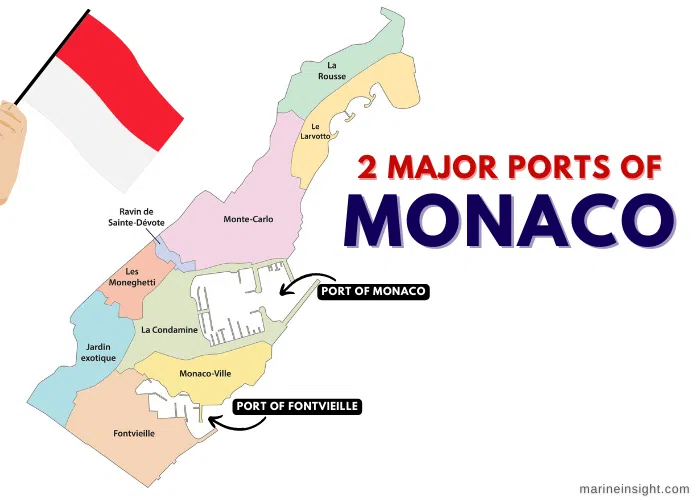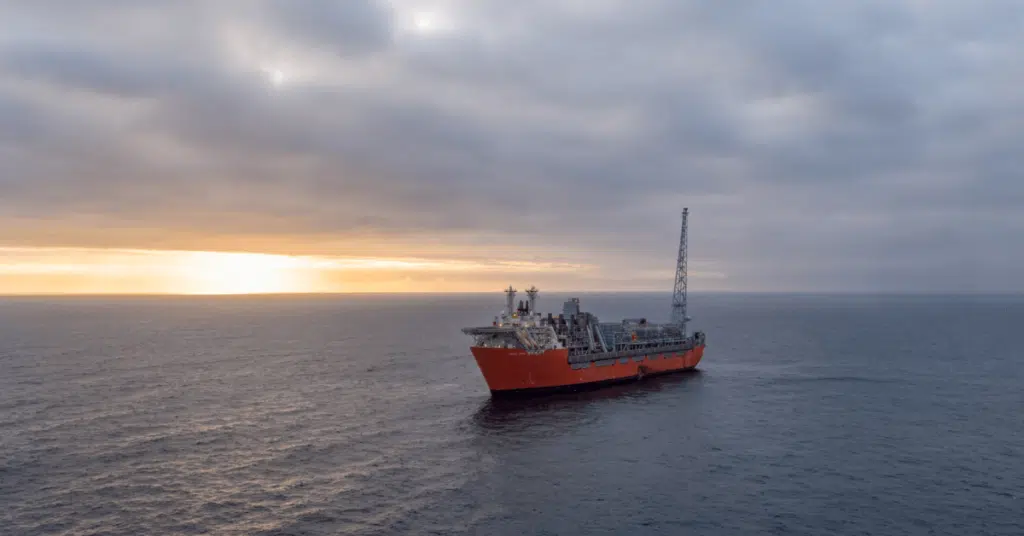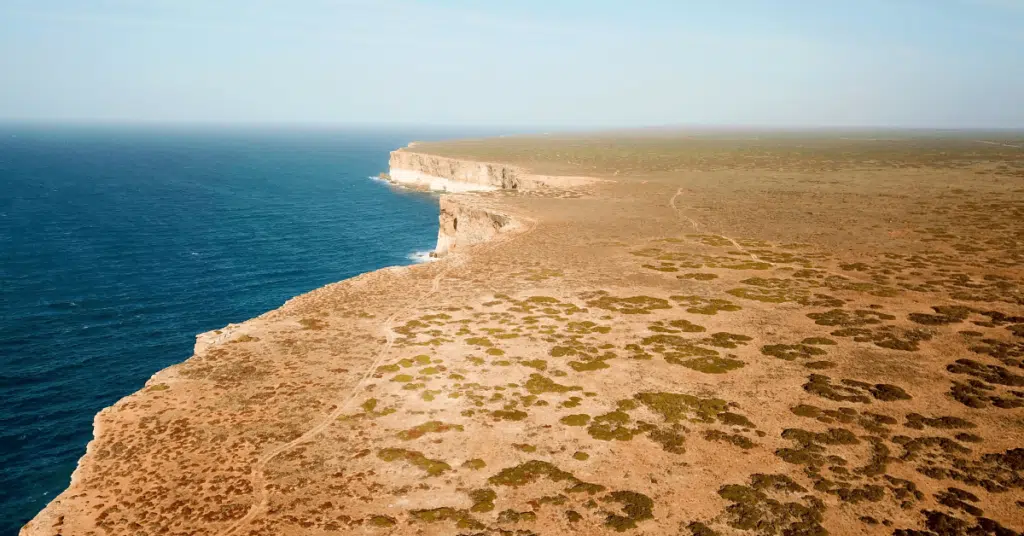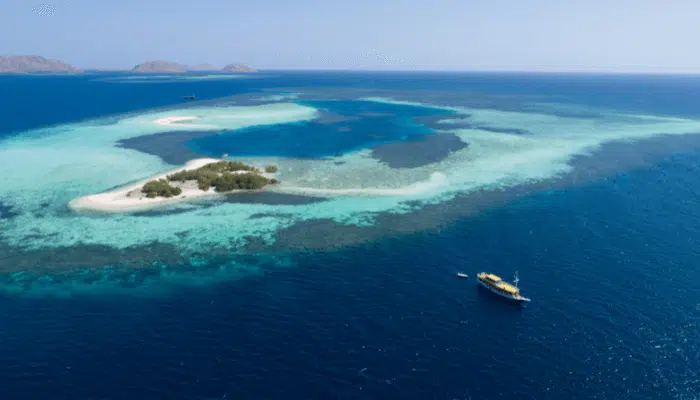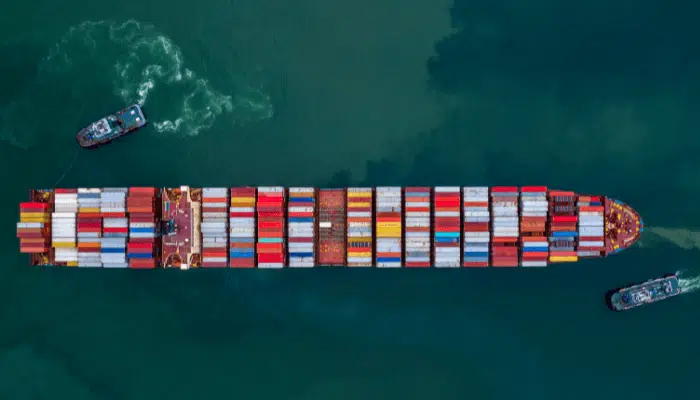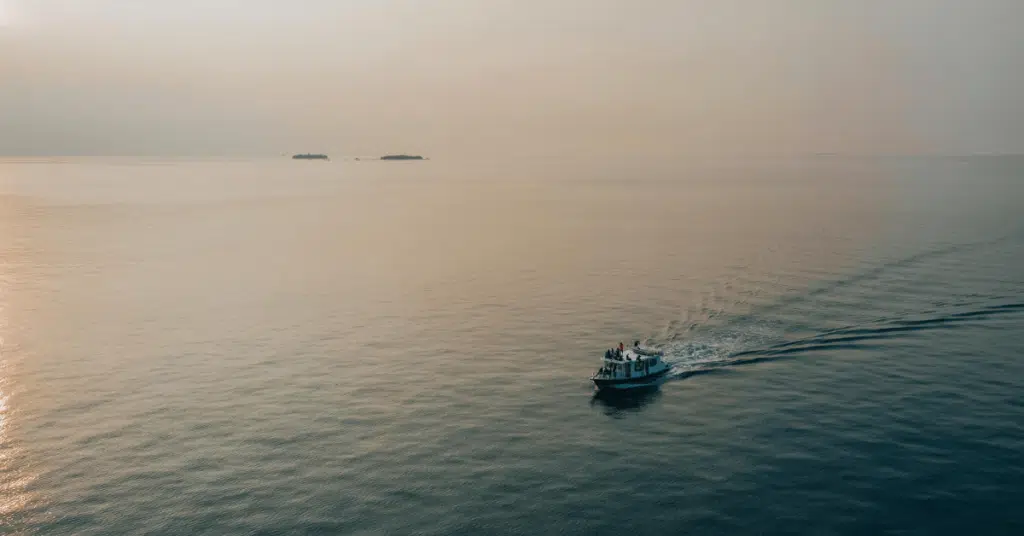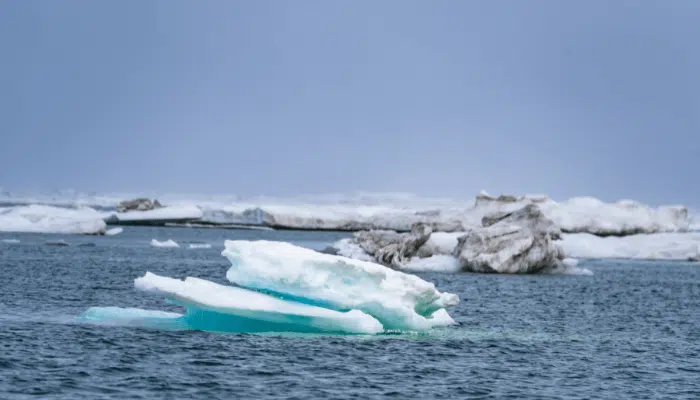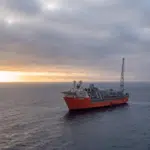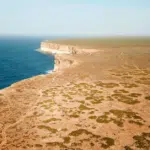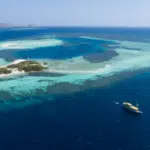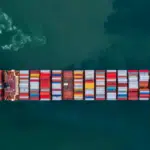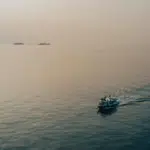2 Major Ports in Monaco
The second smallest independent nation-state after Vatican City, Monaco is a prosperous country with a strong economy and a flourishing tourism sector.
It is situated on the northern shores of the Mediterranean Sea and shares its borders with France, and is in close proximity to the Italian border. The nation is composed of a single municipality, headed by Prince Phillip II and a Prime Minister, representing the Government.
It is one of the most lavish countries with negligible rates of poverty among its citizens, with more than 30% of its citizens being millionaires and billionaires. Situated at a favourable geographical position, with a picturesque landscape, cool weather and having two pleasure ports, Monaco is often labelled as a tourist destination for the rich.
A majority of the revenue is earned from tourism and related activities such as boating, water sports and beaches. It is also famous for the Monaco Grand Prix, Monaco Yacht events, gambling etc.
Income tax exemptions are provided to the nation’s citizens including low tax rates on international business that attracts considerable foreign investments and companies to set up their operations in the principality.
Despite these measures, the country is financially stable with a well developed and reliable banking sector, construction, real estate, industry and also shipping. The real estate prices in this country are the highest in the world.
Trade and Shipping in Monaco
The shipping sector in this country contributes about 4% to the nation’s GDP. Some thousand people are employed in the sector and it has generated a revenue of 180 million euros approximately.
Monaco’s major trading partners include Italy, Germany, the United Kingdom and Switzerland. The country exports ceramics, metal goods, textiles, plastics, cosmetics, perfumes etc. Its major imports include food and grains due to the absence of cultivable land and complete urbanization. It also imports chemicals, precious stones and automobiles.
The French customs department is responsible for collecting trade duties and tariffs for goods destined for Monaco and pays the decided share to the principality. In 2019, Monaco’s exports accounted for 1116,2 million euros and imports were worth 2407 million euros.
Monaco has two major ports, famous as cruise destinations and not trading operations. Let us look at the ports in Monaco.
Port Hercules/ Port of Monaco
Port Hercules is the only deepwater port in Monaco, situated near the Rock of Monaco and the Mediterranean coast.
Port History and Development
This natural harbour has been used for trade since antiquity by the Roman empire however the actual port project was envisioned by Prince Albert I in the early 1900s.
Realising the importance of urbanization and advancement, he undertook various infrastructural projects in the principality and Hercules port was one among them as a requirement of a harbour was crucial for promoting trade and tourism, particularly for accommodating increased boats and yachts in that part of the sea.
The construction of the port began in 1901 and was completed in 1926. The port was carefully designed and initially, two jetties were constructed. The rock used for building the jetties was procured from the western part of the Principality, from a region near the Lilong harbour.
However, the port faced the eastern wind system and needed enhanced sheltered protection. Hence in the 1970’s it underwent an expansion and necessary infrastructural development. It was in this direction that a harbour wall, weighing more than 1 lakh tonnes and 350 meters long was constructed to provide shelter. Prince Albert II built the Yacht club in Monaco and continued to develop the port into one of Europe’s most modern, luxurious and well-equipped marinas.
Thus, today the port is one of the world’s most famous ocean cruise destinations, welcoming yachts and superyachts along with boats and huge cruise ships and vessels.
Port Description
The port spans 16 hectares and is owned by a government enterprise. The port can accommodate huge vessels, ships and cruises including pleasure crafts measuring less than 300 meters. The entrance to the port is 40 m wide with 700 berths, out of which 110 are reserved exclusively for yachts. The outer jetty is about 30 m deep, while the other numerous wharves are 5 to 30 m deep.
Another speciality of this port is its semi-buoyant marina built for protecting marine life near the shores. The port has a swimming pool near one of the quays, overlooking the sea, 2 fixed cranes with a handling capacity of 20 tonnes and also chandlers for ships. About 500 vessels measuring 135 m can anchor at the port.
The port is easily accessible from the Airport which is at a 30 km distance. A helipad and a railway station are in the vicinity. The port organizes yachting competitions participated in by the elite. Other exciting events such as the Yacht show and F1 Grand Prix are also held near the port.
Port Facilities and Services
The principality of Monaco upholds maritime environmental regulations, hence the port facilities and services promote ecotourism. The port has a continuous electricity supply, offers safe mooring facilities. It also has freshwater availability at all berths including a fueling station. It has a strong safety surveillance system with fully functional cameras.
The port is equipped with systems for collecting waste oil, batteries, garbage and plastic. The Maritime police are always on guard and it is prohibited to discard any chemicals, waste or other harmful substances from the ship into the sea.
The port has waiting and restrooms for the visitors, equipped with 25 showers and 20 washrooms. Sailing and scuba diving are some activities that can be undertaken near the port. The port is usually filled with tourists and it is difficult to rent a berth in a short time.
Port of Fontvieille
Fontvieille port is one of the most well-sheltered ports lying near the famous Monaco Rock. It is protected from eastern winds by the rock of Monaco and the harbour wall which shelters the whole Fontvieille ward as well. The port entrance is 100 m near the ridge from the eastern side.
The development of the port can be traced back to the 1960s when Monaco undertook urbanization and sanitation projects to propel economic growth. The Fontvieille area was being developed on 17 hectares of land out of which a considerable amount was given for the construction of a marina.
Port History and its development
The region near the sea-facing coastline of Monaco was divided into plots for land for construction during the 1950s. The port construction began in 1966 and ended in 1973. After port construction, numerous buildings, residential quarters, leisure parks and other amusements were developed in the Fontvieille area. This infrastructural development increased the port’s importance and also provided employment opportunities to the people of the region.
Port Description
Fontvieille port spans 8 hectares and is owned and managed by the government enterprise SEPM. The port can handle about 275 vessels measuring not more than 30 meters. The port is strategically located amidst famous restaurants, shopping markets, sports complexes, heliport etc.
The depth of the port berths’ varies from 1.5 to 15 m approximately. The berths can handle about 150 vessels at once. Mooring services are offered due to the presence of 4 concrete wharves and 5 floating pontoons. Recently, 3 new piers have been constructed to accommodate more cruise ships and yachts. The port authorities can be contacted from Channel number 9 on the VHF radio.
Port Services
It is visited by sailors, boaters, cruise ships and is well equipped with all the required facilities such as drinking water supplies at berths, 5 showers, electricity on the berths and pontoons, 4 washrooms and restrooms, a fuel station, administrative buildings and offers 24-hour assistance to ensure the safety of the visitors.
The port has facilities for storing discarded oil, batteries and other metal waste that is later sent for recycling. The port also offers a facility for pumping out the wastewater without any extra charges.
The port is a popular destination among the citizens as well, hence it is cumbersome to get a berth on rent since the port authorities prioritize the citizens followed by the visitors, and even passage berths are hardly available.
Conclusion
The emphasis on infrastructural development centred around the nation’s recreational ports of Hercules and Fontvieille have resulted in the generation of enormous wealth for this independent principality.
Both the ports play a crucial role in generating employment and also bringing valuable foreign exchange by promoting tourism and offering excellent services not only for the visiting tourists but also shipping companies.
Though not major trading ports, they have propelled economic growth in Monaco by taking advantage of the nation’s geographical position on the globe which makes it an exquisite travelling destination.
You might also like to read:
- 10 Major Ports in Europe
- 5 Major Ports in Portugal
- 8 Major Black Sea Ports
- 10 Major Ports in France
- 15 Major Ports in Spain
Disclaimer: The authors’ views expressed in this article do not necessarily reflect the views of Marine Insight. Data and charts, if used, in the article have been sourced from available information and have not been authenticated by any statutory authority. The author and Marine Insight do not claim it to be accurate nor accept any responsibility for the same. The views constitute only the opinions and do not constitute any guidelines or recommendations on any course of action to be followed by the reader.
Do you have info to share with us ? Suggest a correction
Latest Maritime Knowledge Articles You Would Like:
Subscribe To Our Newsletters
By subscribing, you agree to our Privacy Policy and may receive occasional deal communications; you can unsubscribe anytime.



